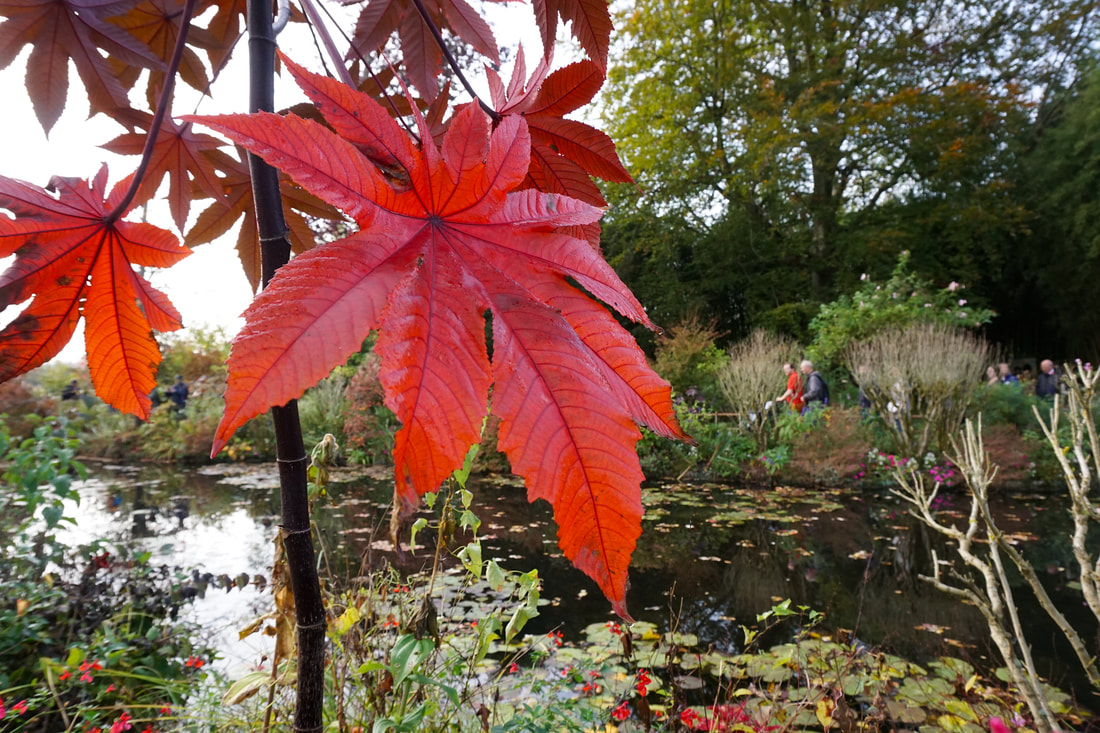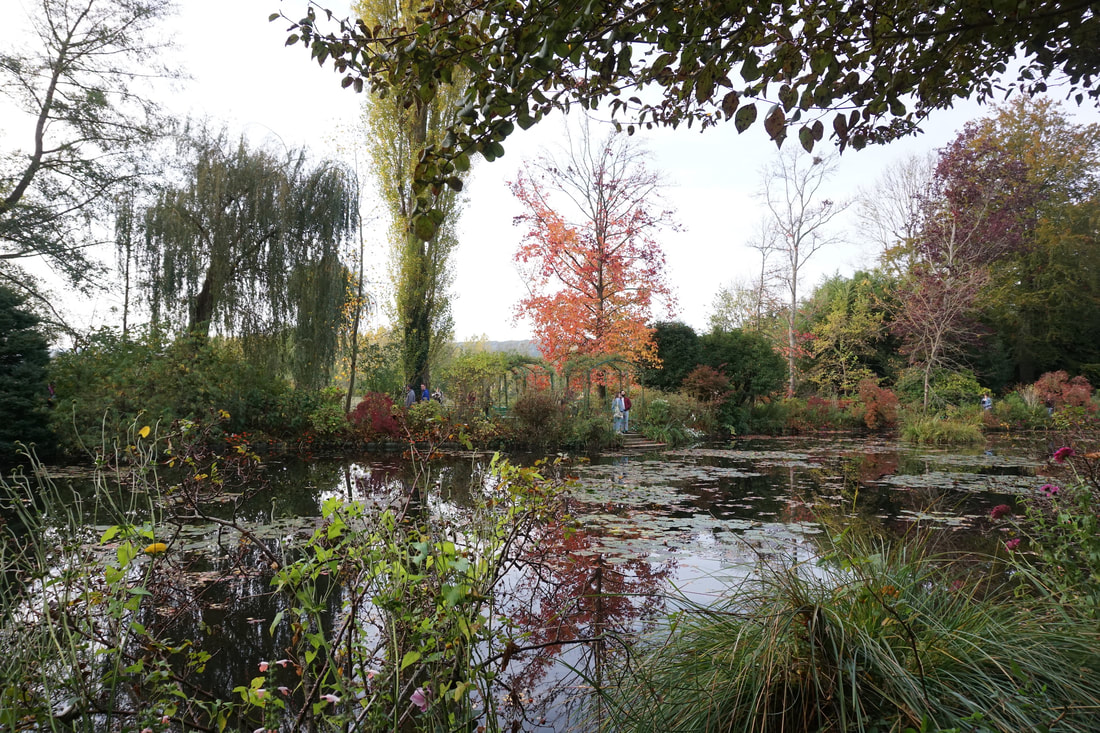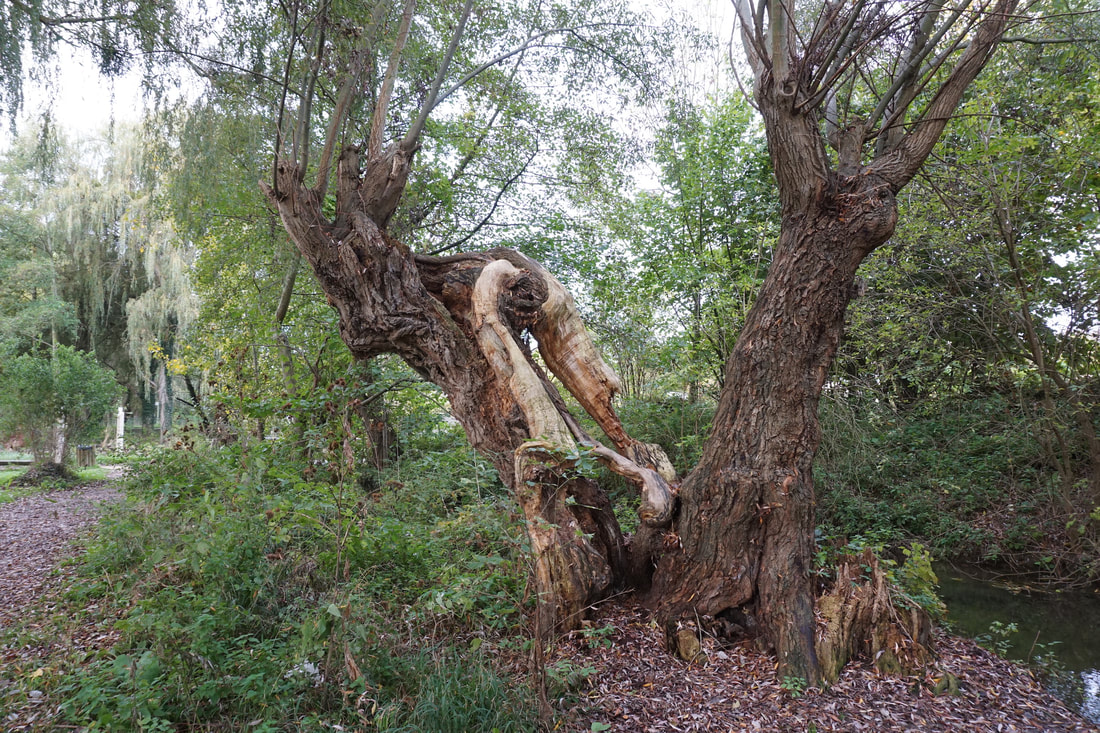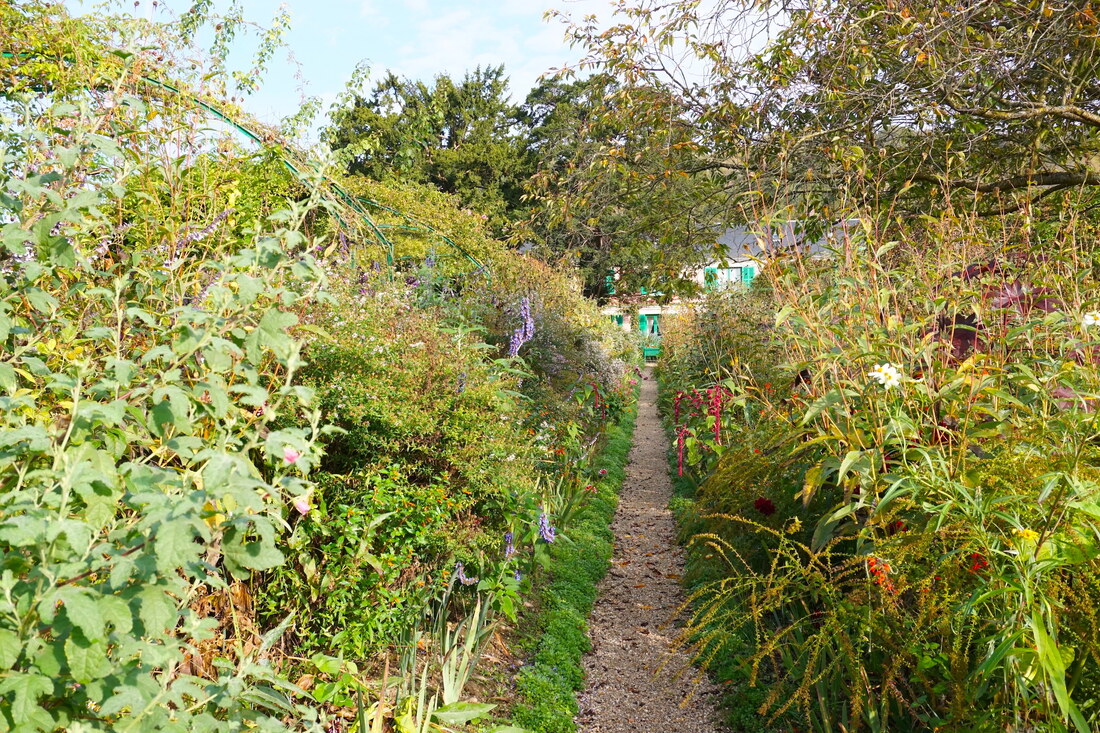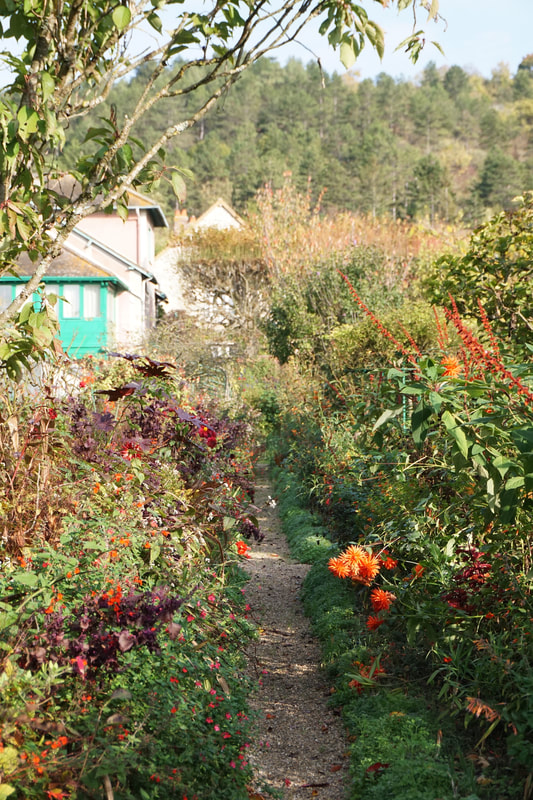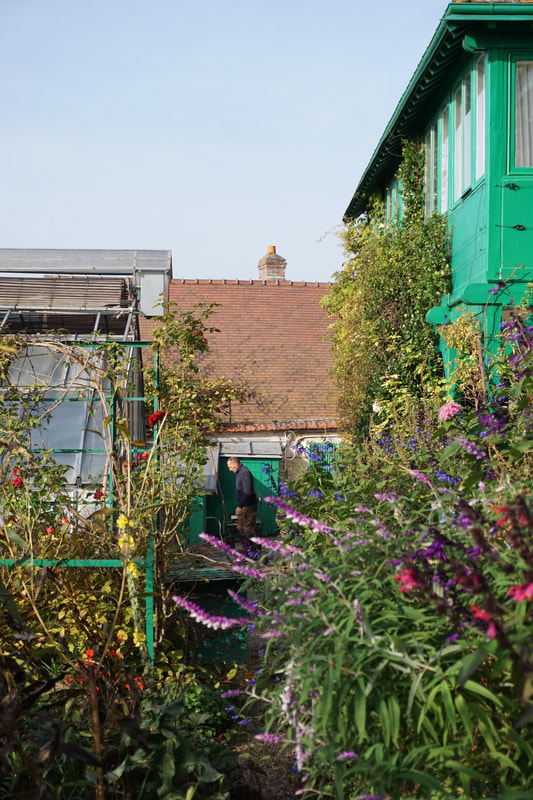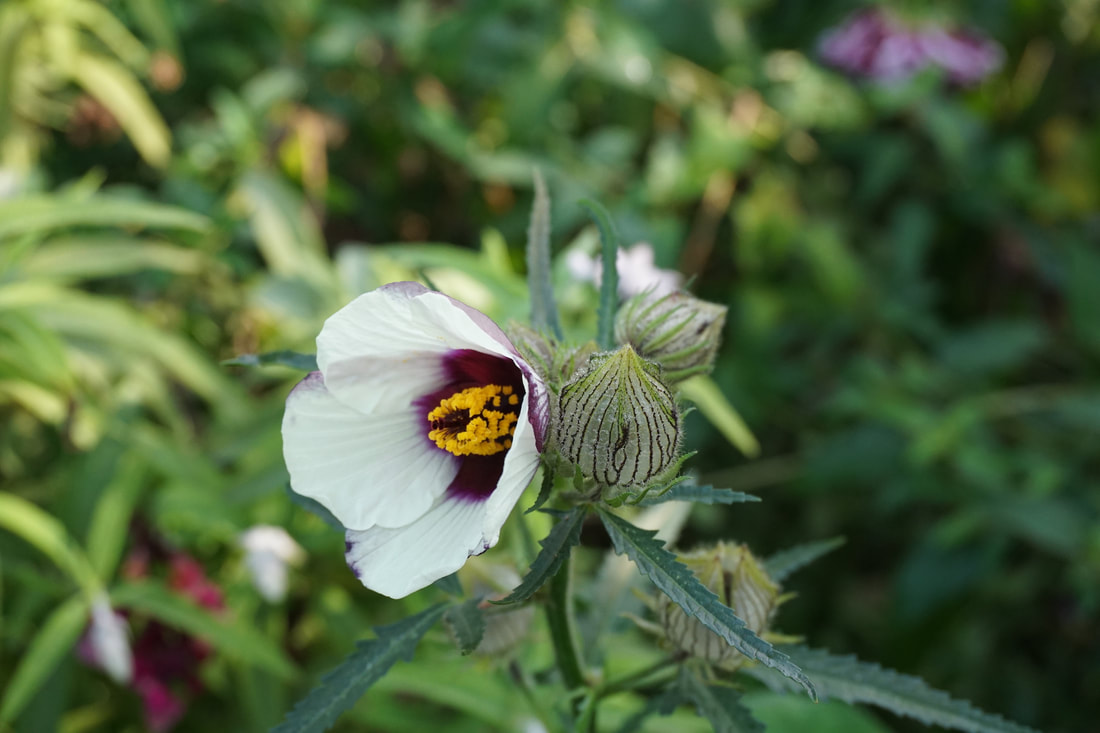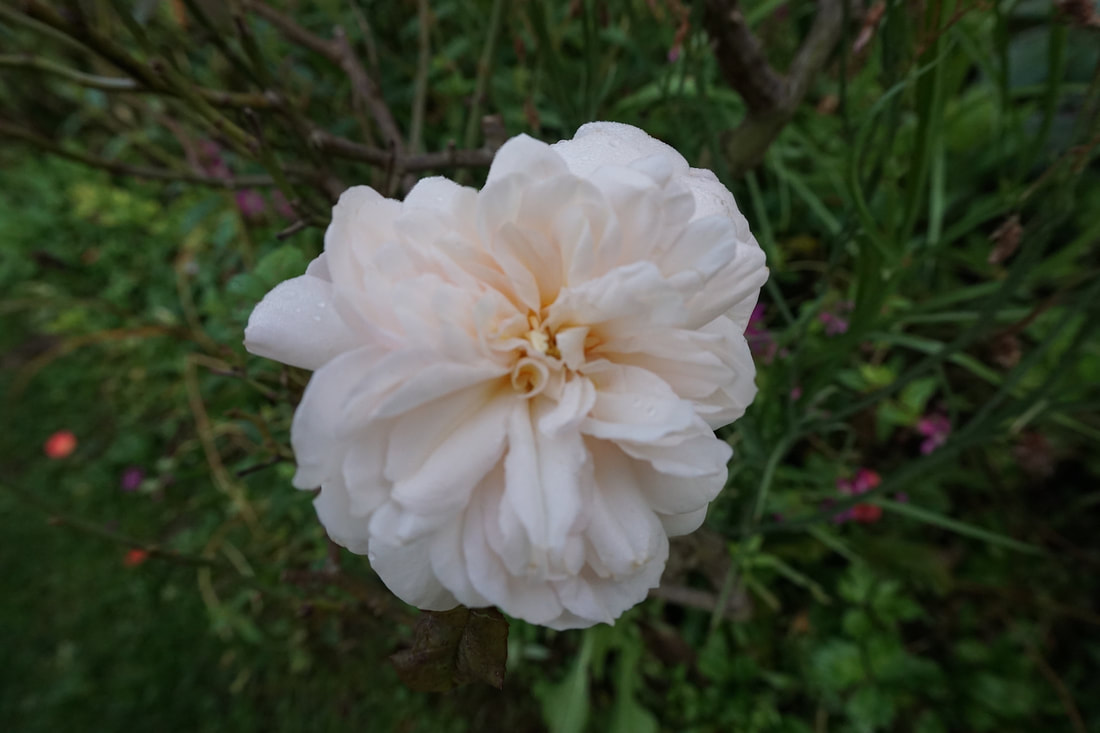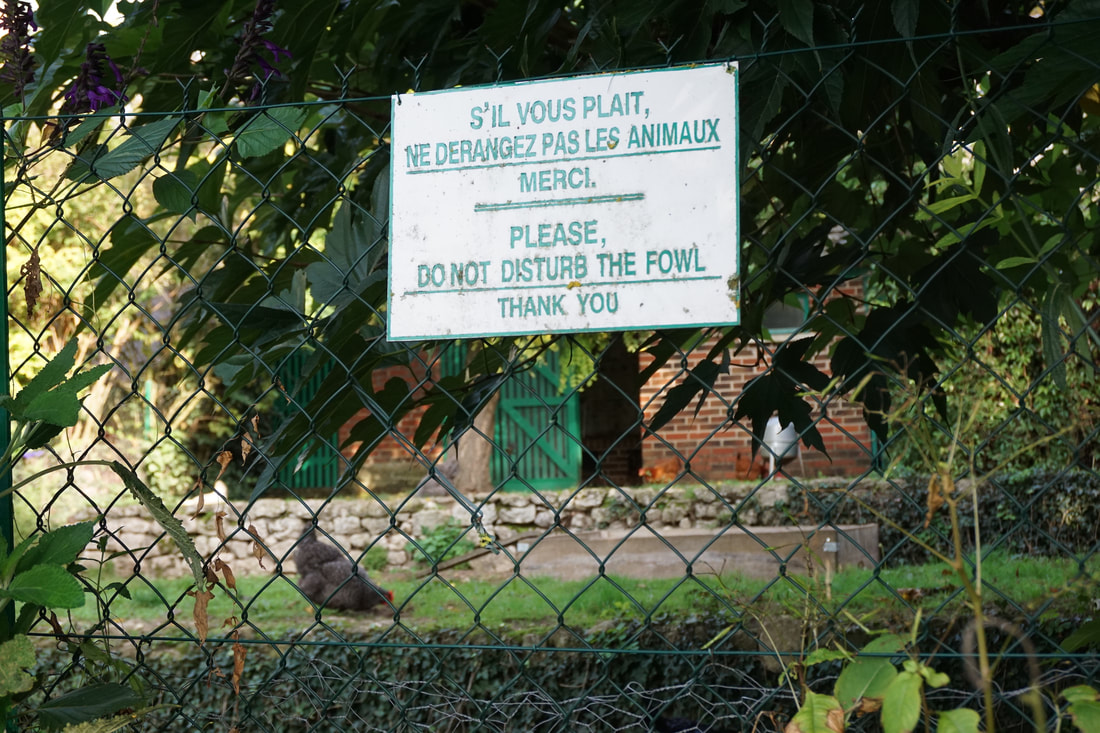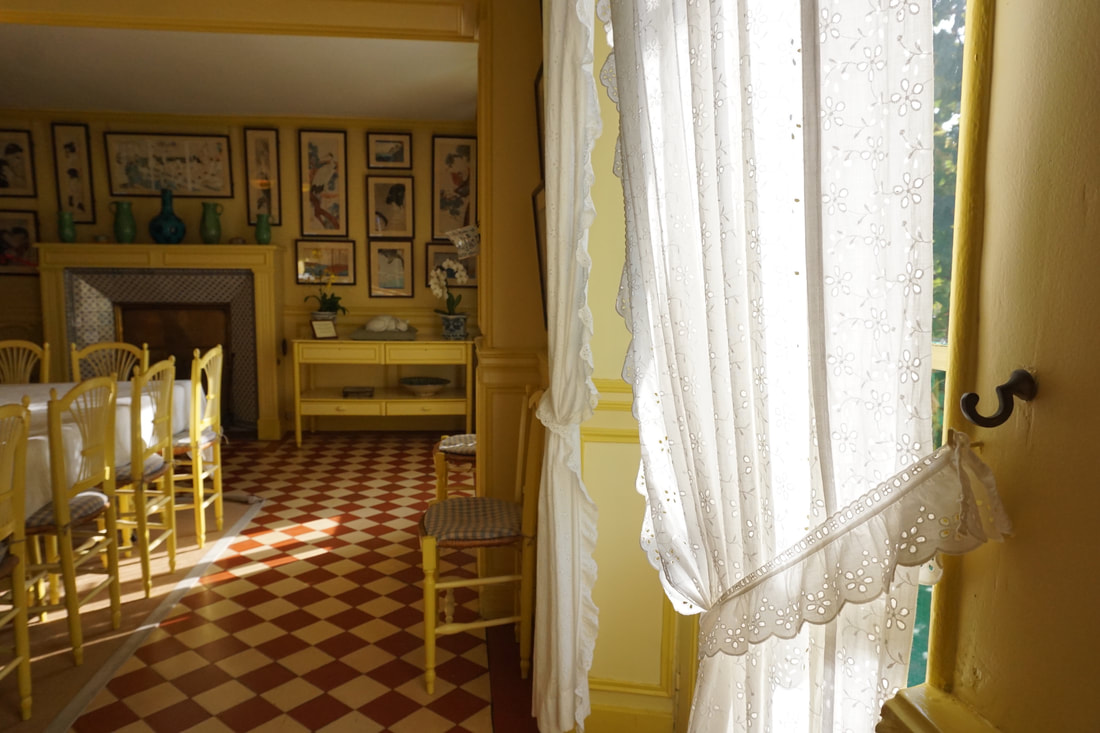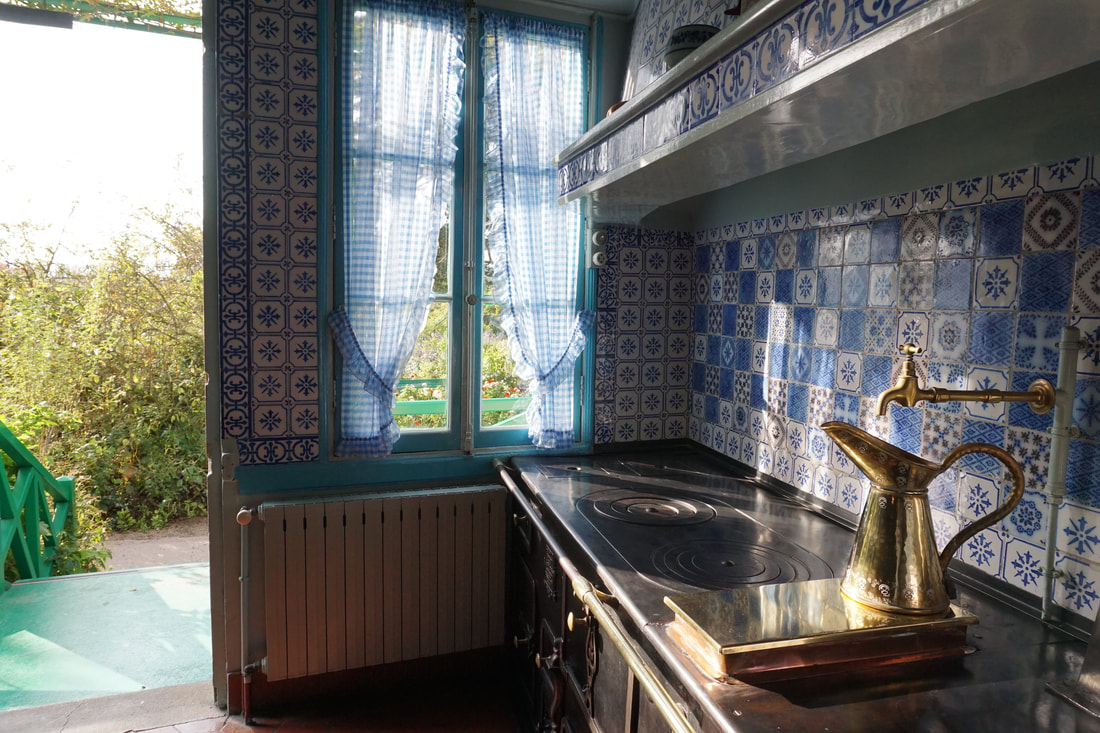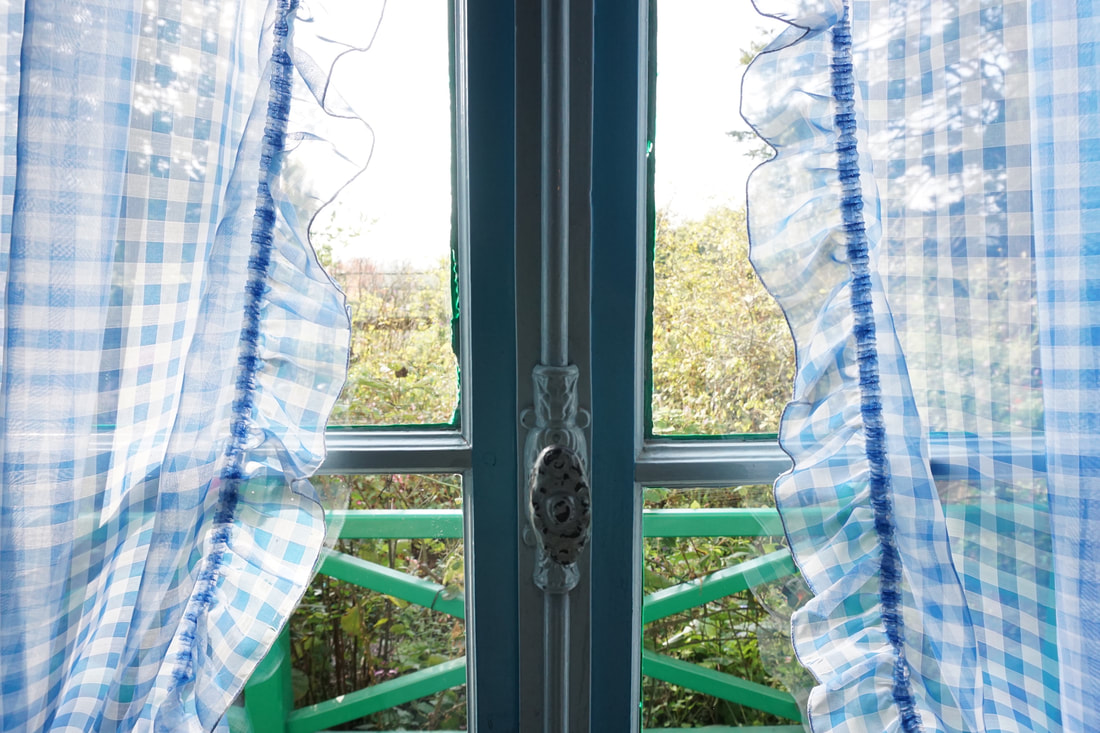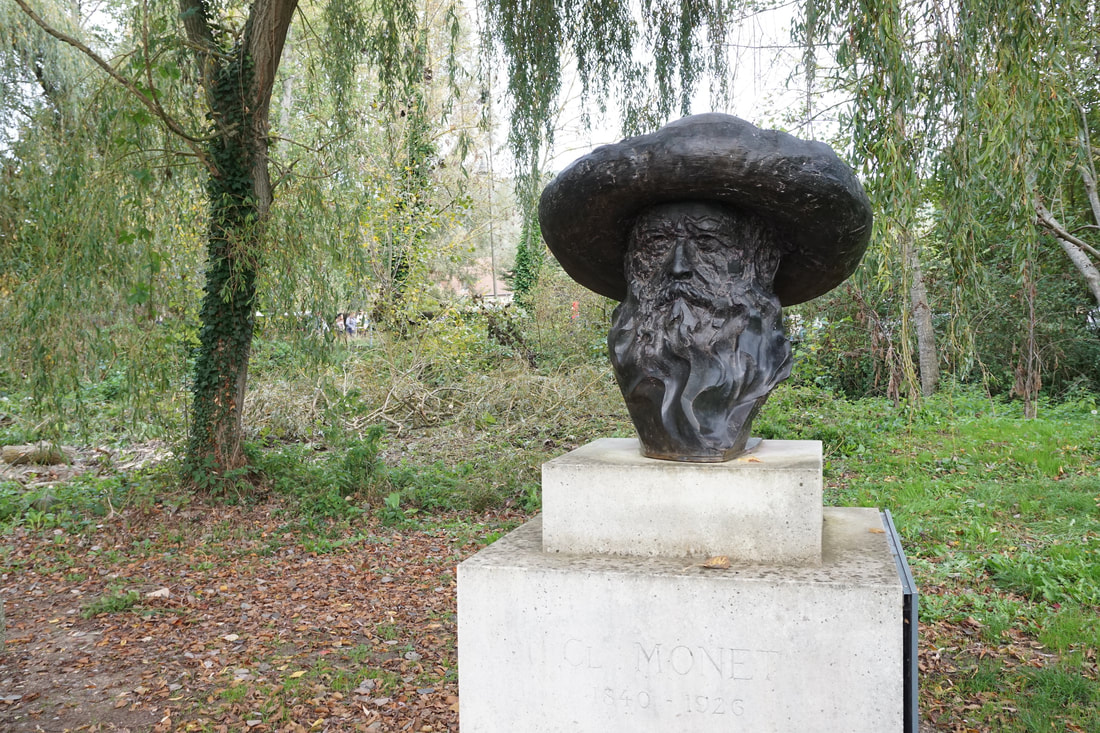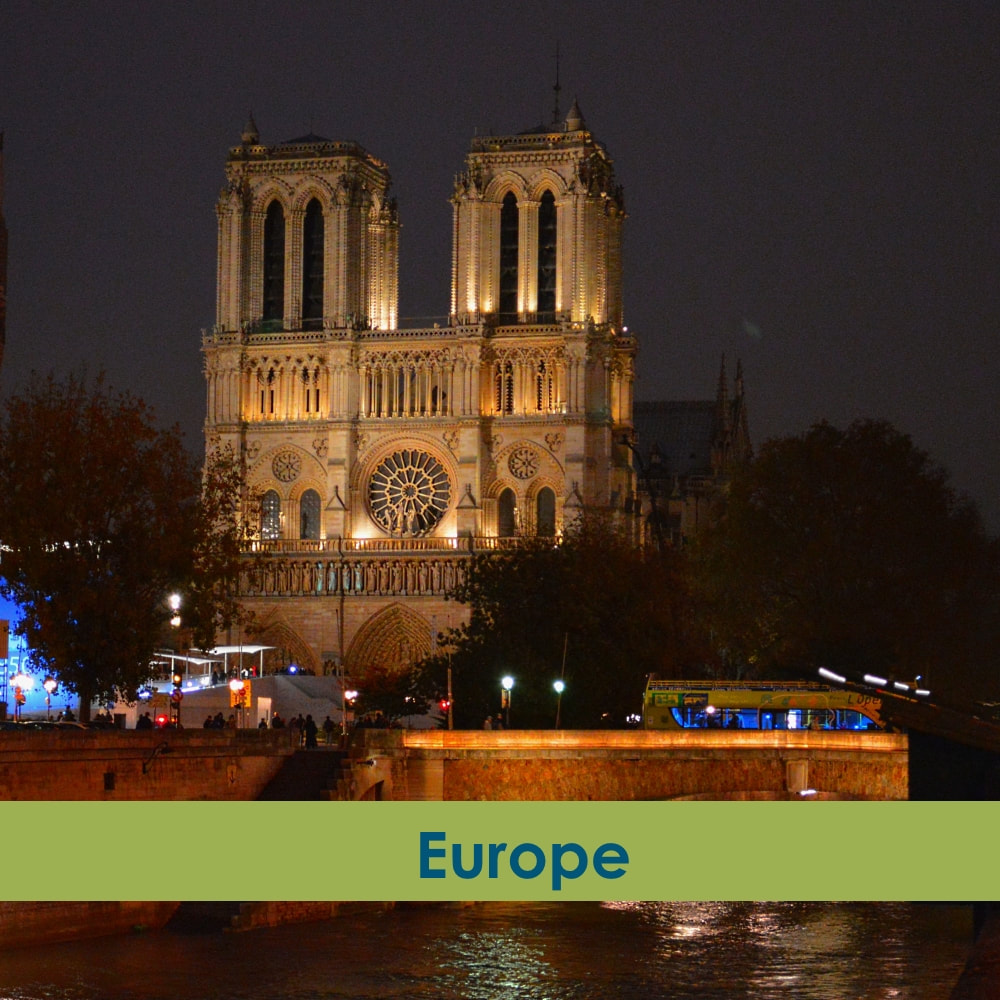In Giverny, France, Claude Monet's home and gardens are an absolute delight in autumn. Gorgeous colours and smaller crowds create a special seasonal magic. Claude Monet's home, studio, and gardens in Giverny, just outside Paris, are one of the city's most popular attractions in summer and for good reason. The famous water lily pond, the Japanese-style bridge covered with lavender wisteria, and the flower beds studded with vibrant pastel blooms are the stuff of travel legend, the subjects of a million photos. But those who are truly lucky will bypass Giverny's famous summer scenes (and crowds) and discover a different kind of magic altogether if they visit in late October. I was fortunate to visit Giverny on October 31st, the very last day of the tourism season. I almost didn't make it. I forget that it was a seasonal site! I'm happy I decided to book when I did, for more reasons than one. Not only did I grab a wonderful travel experience before it was too late, I also had the opportunity to see it at its finest. Yes, I did say its finest. The Giverny beauty of late October is very different that of mid-July. It's more subtle, sedate. But as I took in the many different shades, textures, and scents of the garden, I was reminded of the fact that Claude Monet worked in the garden, in all seasons, for the better part of 40 years. He knew that gardens weren't just a summertime affair and if he felt it was worthy of his time, energy, and attention throughout the year, that was good enough for me. Who am I, after all, to say that the gardens were only worthwhile in summer when no less than the ultimate authority on light and colour himself was devoted to them all year round? There's a gentle grace wafting through a garden that's on the cusp of going to sleep for the reason. Patches of sparse grass and wispy moss demonstrate just how many people have trodden past the little chainlink ropes designed to keep people on the designated paths, while scraggly clumps of impatiens reminded me that the job of a gardener is never really done. It's a scene that any gardener can relate to, even if you plant on a much smaller scale than Mr. Monet. I wasn't alone in my time of exploration and reflection. For the last day of the season, there were plenty of visitors. Had I not know that the site was on the cusp of closing for six months, I would have thought it was a regular day. But of course, the tour groups I encountered were nothing compared to the mega crowds and endless lines which congest the site in summer. I was thankful for the chance to grab photos that were free from people and I was happy to carve out some space at Giverny that was all my own. From my quiet, semi-private perch on a bench at the pond's edge, it was interesting to observe so many different kinds of visitors converging at once. There were the generic tour groups, robotically walking single file, with no particular interest on their faces. American retirees wore their mom and dad-style jeans unironically, their travel uniform completed with white sneakers and tucked in t-shirts. Wanna-be influencers created bottlenecks as they recruited artsy lone backpackers to take their portrait. And, of course, where were the random oddballs like yours truly, tucked in the corners and watching it all. As I strolled through Giverny, I couldn't help but wonder what it's like to live with these two hemispheres, a frantic 'on' season and a barren 'off' season. Do they like the rhythm of these two worlds, predictably showing up every spring and autumn like clockwork? What are the winters like? It must be quiet. But is it the kind comforting quiet like the first day of a heavy snow, when everything feels tucked in for a long rest or the eerie emptiness of a ghost town, everyone secretly itching for a return to the hustle and bustle of spring? Monet certainly knew that to everything there was a season. He gardened and painted all year round, under all kinds of conditions and even when he was on the cusp of blindness. Perhaps that's what Giverny is like in the winter, just carrying on regardless of circumstance and distraction, not paying much attention to the presence or absence of the visitors but letting the seasons and the work guide the way. I concluded my visit with a quick walk through Monet's home. This charming building is often said to be one of nicest spots of a Giverny visit but I felt instantly uncomfortable. I had the distinct impression that Claude Monet was a thoughtful man who kept to himself. While I haven't read anything about his personality, I can't help but think that a person who devoted decades to developing a tangled garden to envelop his home placed a higher value on personal retreats than public parties. As such, I felt a bit like an intruder. And so, I went back to the gardens for a final walk around - two, really, if you count on how I couldn't find the official exit and had to be asked to be released through the front gate. Giverny is hard to leave in more ways than one! As winter creeps in, may all of Monet's flowers winter-well, waking up for the next round of visitors to reflect on art and life and meaning in the spring. Visiting Monet's Giverny: Logistics, transportation, food tips.I took the most popular route to Giverny: I caught a train to Vernon, the closest town with a train station, from Paris' Saint Lazare station. (Cost: About 16 Euros, one way). Fellow coffee lovers, you'll be happy to learn that there is a Starbucks in the station next to where the trains leave for Vernon and all other points in Normandy. (Cost: Overpriced, but worth it).
In Vernon, I followed the crowds to the well-marked shuttle to Giverny (Cost: 5 Euros, one way). I already had purchased my ticket for Claude Monet's home in advance, something I highly recommend as it allows you to bypass the regular entrance and slip in via the group doors. I was very impressed by how well everything was organized in Giverny. There were clear signs everything, including those pointing visitors in the direction of Claude Monet's bust in the woods (lovely!) and his graveyard at the local church. A word to the wise for early visitors to aim to beat the crowds (like me!) By the time you're finished visiting Monet's home it will be late morning and you'll be hungrier than usual - but many of the restaurants don't start serving lunch until 11:30 or much later. As well, not all establishments remain open in the shoulder season. Pack snacks and be prepared for limited lunch options. I was happy with a place called Au Coin de Pain'tre on Rue Claude Monet. It offers a sandwich takeaway "menu" of large baguettes sandwiches plus a slice of torte and a drink for 10 Euros. If you enjoyed this piece, you'll also like: Secrets Of The Louvre For The Savvy Traveller A Day In Paris: What To Do On A Layover Of 3 Hours Souvenirs From Paris: Shopping In The City Of Lights. Comments are closed.
|
�
Recent Posts
Posts by Location
Post Categories
All
Posts by Date
June 2024
|
Disclaimers, Privacy, and Cookie Policy |
Top 100 Travel Influencer
As named by the Obama White House in 2014. |
© COPYRIGHT 2024. ALL RIGHTS RESERVED.
|

